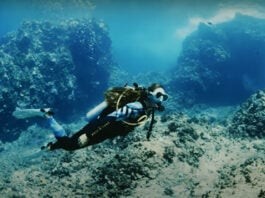Sea Urchins are those animals that live in the ocean and look like overstuffed pincushions. They are also the animals that most people try to avoid ordering at sushi restaurants.
Any diver or snorkeler who encounters a long-spined Sea Urchin is not likely to forget the intimacy of its spines anytime soon. Not only do the tips become easily embedded under the skin, but they are also riddled with bacteria and toxins that are irritating to say the least. Imagine running barefoot across a deck that hasn’t been sanded in fifty years, oh, and sprinkle on some lemon juice for good measure, yeoouch!!
Sea Urchins belong to the phylum Echinodermata. A good way to remember this name, especially if you’re a fan of Disney movies, is to think of the theme song from the Lion King, "Hakuna Matata." Yup, you ARE going to have that song in your head for the rest of the day and there is nothing you can do about it. Back to the scientific jargon. Sea stars, sea cucumbers as well as brittle stars all belong to this phylum. All these critters share something known as pentaradial symmetry. For anyone who failed to pay attention during geometry, "penta" stands for five and "radial symmetry" describes objects that are similar which originate from the same center. Basically, these animals all have five parts to their bodies. A great example is the body structure of sea stars, five arms. The spines of Sea Urchins are in multiples of five; I dare you to count them. Joking! However, they do have mouths located underneath their bodies with five jaws. This complicated chewing apparatus is known as Aristotle’s Lantern.
Most species of Sea Urchins feed on algae while some species feed only on encrusting animals such as sponges and bryozoans. Their preference for algae has made Sea Urchins unwelcome members of kelp forests. Typically Sea Urchins reside on the bottom of kelp forests, where they most often find their food. In healthy kelp forests, Sea Urchins primarily feed on the shed of kelp. However, when the population of Urchins outgrows the normal food supply of broken kelp blades, they begin to feed upon the holdfasts. This severs the "plants" and sets them adrift into the open ocean. When Sea Urchin populations go unchecked, they have been known to decimate entire kelp forests, making underwater deserts where a giant ecosystem once thrived. This typically occurs when the populations of one of their main predators, sea otters, dwindle.
Several species of Sea Urchins are venomous and have toxins in their spines. Other species do not have toxins and rely on their spines for protection. Typically Sea Urchin spines break off into the hands of unsuspecting divers. The spines are painful in themselves, but if they are not immediately removed, often the bacteria that reside on the spines cause infection. No fun. Other than sushi loving humans, predators of Sea Urchins also include sea stars, crabs, wolf eels, lobsters, and fishes.
The shells of Sea Urchins are referred to as tests. The internal organs occupy very little space within the test. This allows for the development of gonads during the breeding season. During this time, the body cavities of Sea Urchins are crammed with eggs and sperm. The tender gonads are one of the main reasons Sea Urchins are so attractive to fish predators. If you’ve ever dived in California waters, you know what happens when you crack open a Sea Urchin. It’s as if you’ve just rung a dinner bell that only Garibaldi’s can hear. The gonads are what you’ll be served if you order Uni, also known as Sea Urchin, at a sushi restaurant. Sounds gross, but they are considered a great delicacy in many cultures.
Sea Urchin activity typically occurs at night, making them nocturnal. While some species spend their days wedged under rocky ledges or crevices, others will group together in exposed portions of the reef. Large numbers are a defensive tactic used to protect them from fish predation. Though the sharp spines of Sea Urchins are often defense enough, safety in numbers is added protection against predation by triggerfishes, pufferfishes or damselfishes.


